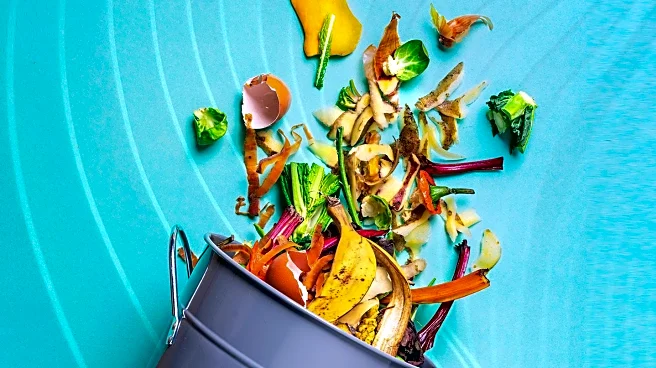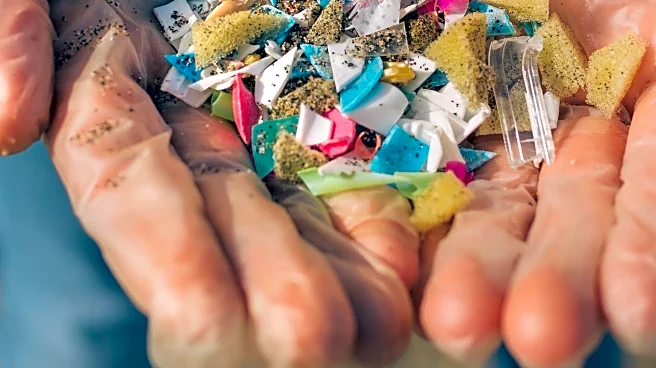What's Happening?
A recent study conducted by researchers from the University of Birmingham has found microplastics in various beverages, including energy drinks, coffee, tea, soda, and juice. The study tested 31 different beverages and discovered that hot drinks contain higher levels of microplastics compared to cold drinks. Hot tea had the highest concentration, with 49 to 81 microplastics per liter, while energy drinks contained between 14 and 36 microplastics per liter. The researchers suggest that heat increases microplastic release from packaging materials, posing a greater risk of exposure in hot beverages.
Why It's Important?
The presence of microplastics in beverages raises concerns about potential health risks, as these particles can accumulate in human organs and tissues. Microplastics have been linked to cell damage, inflammation, and disruption of gut bacteria, which could impact the immune system and accelerate aging. The study highlights the need for legislative action to limit human exposure to microplastics, as they are found in everyday products and environments. Consumers may need to consider the temperature at which they consume beverages to reduce microplastic intake.
What's Next?
The study's findings may prompt further research into the health effects of microplastic ingestion and encourage policymakers to implement regulations to reduce microplastic exposure. Beverage manufacturers might explore alternative packaging materials to minimize microplastic release. Public awareness campaigns could educate consumers on the risks associated with microplastics and promote practices to reduce exposure, such as consuming cold beverages.
Beyond the Headlines
The study underscores the pervasive nature of microplastics in the environment and their potential long-term impact on human health. As microplastics are found in various consumer products, there is a growing need to address their presence through sustainable practices and innovations in packaging. The findings may also influence consumer behavior, leading to increased demand for eco-friendly products and packaging solutions.










